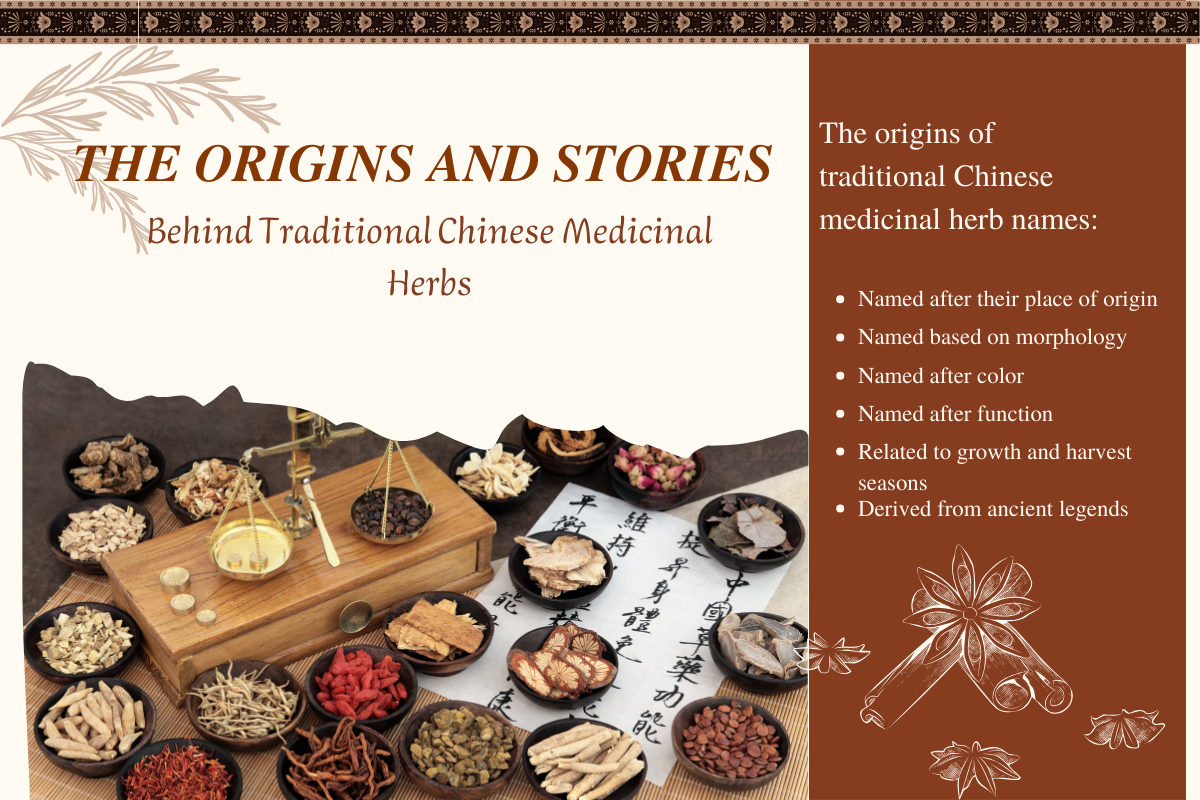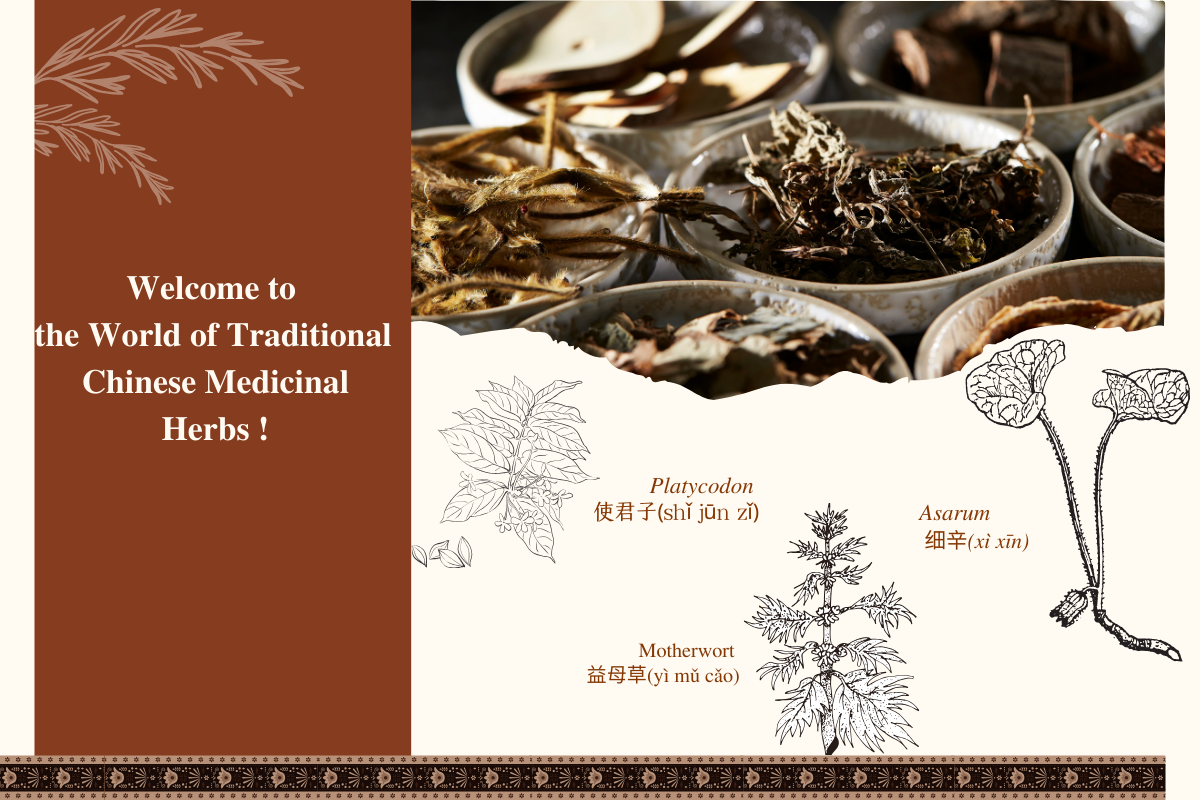The Origins and Stories Behind Traditional Chinese Medicinal Herbs
In China, the names and stories of traditional Chinese medicinal herbs are akin to a profound historical scroll, bearing the wisdom and cultural heritage of millennia. From ancient times to the present, the nomenclature of traditional Chinese medicinal herbs not only encapsulates rich natural characteristics and medicinal properties but also integrates regional culture, historical legends, and humanistic spirits. The origins of traditional Chinese medicinal herb names are diverse, and I will illustrate with some common types and specific examples to elaborate:

Named after their place of origin:
Donkey-Hide Gelatin 阿胶(ē jiāo): Originating from Ajiing in Dong'e County, Shandong, it garnered its name from this location. The unique water quality in Dong'e County is conducive to the processing of donkey hide, resulting in superior-quality donkey-hide gelatin.
Guang Chenpi 广陈皮 (guǎng chén pí): Also known as Xin Hui Chenpi, mainly produced in the Xin Hui region of Guangdong. The local climate, soil, and natural conditions are ideal for citrus[柑橘(gān jú)] cultivation, yielding high-quality chenpi with remarkable efficacy.
柑橘 (gān jú),名词,citrus
Example:
- On the nose, butterscotch and apple aromas are dominant with hints of citrus.
散发着奶油糖果,苹果以及柑橘的芳香。
Sān fā zhe nǎi yóu táng guǒ,píng guǒ yǐ jí gān jú de fāng xiāng。 - In only one of these last eleven years was the weather unfavorable for growing citrus crops.
在过去的十一年里,只有一年的天气不利于柑橘作物的生长。
Zài guò qù de shí yī nián lǐ,zhǐ yǒu yī nián de tiān qì bù lì yú gān jú zuò wù de shēng zhǎng.
Named based on morphology:
Achyranthes Bidentata 牛膝(niú xī): Its stem joints are swollen, resembling the knee joint of a cow, hence its name.
Aconitum 乌头(wū tóu) : The shape of its root resembles the head of a crow, hence it is called aconitum.
Named after color:
Cinnabar 朱砂(zhū shā) : A member of the sulfide mineral cinnabar family, presenting a bright or dark red hue resembling blood, hence named cinnabar.
Coptis 黄连(huáng lián) : Its root is bead-like and yellow in color, thus called coptis.
Named by aroma:
Asarum 细辛(xì xīn) : With thin, spicy roots exuding a pungent flavor, it is named asarum.
Houttuynia Cordata 鱼腥草(yú xīng cǎo) : The entire plant emits a strong fishy smell, hence its name.
Named after function:
Motherwort 益母草(yì mǔ cǎo) : Effective in postpartum recovery for women, regulating female physiological issues and beneficial like a mother, hence named motherwort.
Eucommia Bark 骨碎补(gǔ suì bǔ) : The main function is to promote bone fracture healing, exhibiting a substantial therapeutic effect on orthopedic injuries, seemingly enabling fractured bones to mend, thus named eucommia bark.
Related to growth and harvest seasons:
Prunella 夏枯草(xià kū cǎo) : This herb grows new leaves after the winter solstice, blooms in spring, and withers[枯萎(kū wěi)] by the summer solstice, hence named based on its growth traits.
枯萎(kū wěi),动词,withers
Example:
1. Her life passed slowly, like a flower withers slowly.
她的生机慢慢流逝,就好像一朵花在慢慢枯萎。
Tā de shēng jī màn màn liú shī,jiù hǎo xiàng yī duǒ huā zài màn màn kū wěi.
2. The flesh withers as the spirit flourishes.
肉体上的枯萎,正如精神上的繁荣。
Ròu tǐ shàng de kū wěi,zhèng rú jīng shén shàng de fán róng.
Sophora Leaf 霜桑叶(shuāng sāng yè) : Leaves picked after frost, containing higher effective component concentrations, rendering them valuable medicinally, and thus named sophora leaf.
Derived from ancient legends:
Platycodon 使君子(shǐ jūn zǐ) : Legend has it that Guo Shijun from Panzhou often used this medicine to treat childhood ailments with significant effects, hence the name platycodon.
Polygonum Multiflorum 何首乌(hé shǒu wū) : As per the tale of an elderly man surnamed He who, after long-term consumption, achieved longevity, and witnessed his white hair turning black, even his beard, leading to the recognition of this medicinal herb as polygonum multiflorum.

The origins of these medicinal herb names not only describe the medicines themselves but also serve as a testament to the blending of traditional Chinese medicine culture with nature, society, and humanities. They reveal the scientific and artistic aspects of traditional Chinese medicine, portraying the deep heritage of traditional Chinese medicine culture. Despite the rapid advancements in technology in modern society, the traditional Chinese medicinal herbs and their associated stories retain invaluable worth. They are not solely potent remedies for treating illnesses but also serve as bridges linking the past and future, nature and culture, carrying on the wisdom and spirit of the Chinese nation.